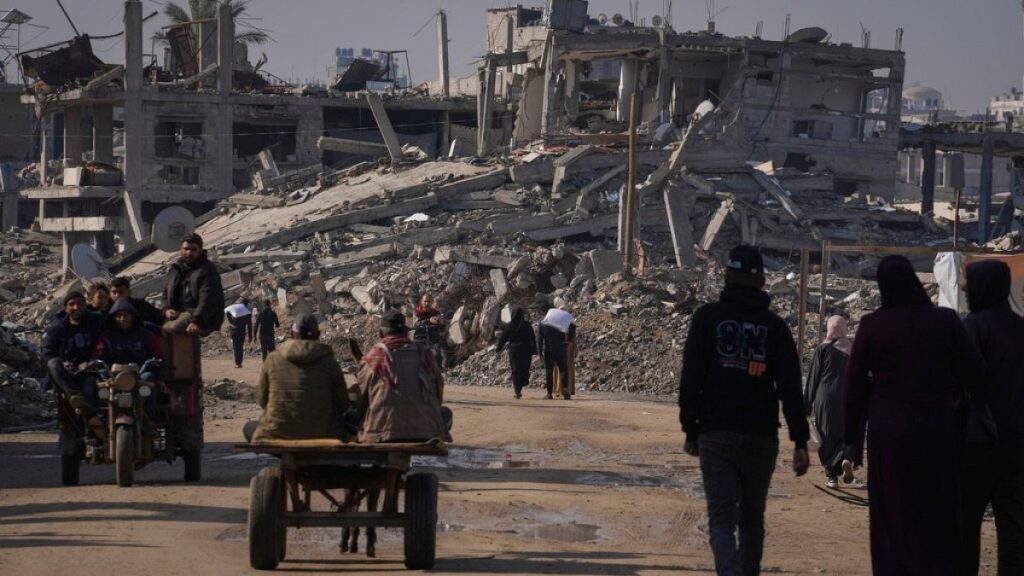The prospect of a ceasefire between Israel and Hamas, potentially ending over a year of devastating conflict in the Gaza Strip, hangs in the balance. Negotiators from both sides have reached a proposed truce and are presenting the draft agreement to their respective leadership for final approval within the next 24 hours. This critical juncture follows months of intense diplomatic efforts, primarily mediated by the United States, Egypt, and Qatar, to bridge the significant divide between the two warring parties. While optimism is cautiously high, previous attempts at securing a ceasefire have faltered, underscoring the fragility of the current situation. The coming hours will determine whether this latest effort translates into a tangible end to the violence that has plagued the region.
The current momentum towards a ceasefire is fueled by a reported breakthrough in negotiations, marked by significant progress in addressing key sticking points. While the specific details of the draft agreement remain undisclosed, it reportedly involves a “phased ceasefire” approach. This phased approach is seen as a crucial compromise, addressing the seemingly intractable demands of both sides. It allows Israeli Prime Minister Benjamin Netanyahu to demonstrate tangible progress towards the release of Israeli hostages held by Hamas, while also allowing him to maintain his stance of seeking “total victory” against the militant group. This phased structure provides a framework for a potential long-term resolution, with the possibility of a more permanent ceasefire being negotiated after the initial phase is implemented.
The involvement of the Mossad director in the Qatar-based negotiations further signals the seriousness of the current diplomatic push. Netanyahu’s decision to send his top intelligence official underscores the high-level engagement and the potential for a meaningful breakthrough. The proximity of a potential deal is further emphasized by US Secretary of State Antony Blinken’s assessment that a ceasefire this week is “very close.” The urgency is palpable, with the impending inauguration of US President-elect Donald Trump adding another layer of complexity to the already delicate diplomatic landscape.
However, despite the apparent progress, significant hurdles remain. The core issue of hostage exchange continues to be a major sticking point. Hamas insists on the withdrawal of Israeli troops from Gaza as a precondition for the release of Israeli hostages, a demand that clashes with Netanyahu’s stated objectives. The intricacies of the hostage exchange, involving the number of hostages to be released and the corresponding release of Palestinian prisoners held by Israel, remain a delicate balancing act. The successful navigation of these complexities is crucial for the viability of any agreement.
The fifteen months of conflict have exacted a heavy toll on both sides, particularly on the civilian population of Gaza. Thousands have been killed, infrastructure has been decimated, and the region has been further destabilized. The humanitarian crisis in Gaza has been exacerbated by the ongoing conflict, underscoring the urgent need for a resolution. The international community has repeatedly called for an end to the violence and a return to negotiations, recognizing the devastating consequences of continued hostilities.
The next 24 hours will be a critical test of whether the current momentum can translate into a concrete ceasefire agreement. The fragility of the situation is underscored by the fact that previous attempts at securing a truce have faltered. The complexities of the issues involved, including the hostage exchange, the withdrawal of Israeli troops, and the long-term security arrangements, require delicate and intricate negotiations. While optimism is tempered by caution, the potential for a breakthrough remains. The success or failure of the current diplomatic efforts will have significant ramifications not only for Israel and Palestine but also for the broader Middle East region. The coming hours will determine whether a new chapter of peace can be written or whether the cycle of violence will continue.














